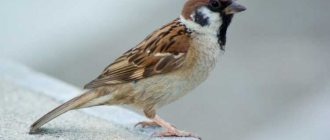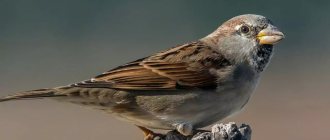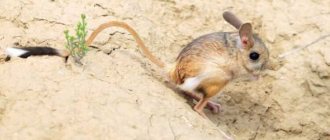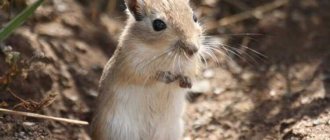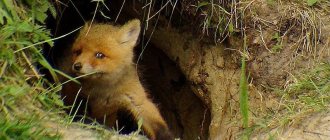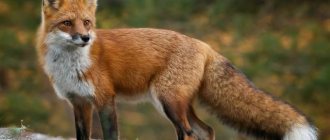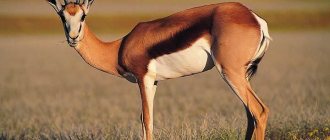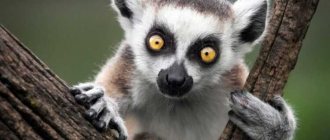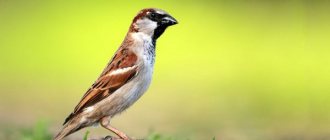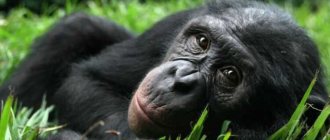In coniferous and mixed types of forests you can find a wide variety of representatives of the animal kingdom, but it is songbirds that are easily recognized by their unique trills, which fascinate and give incredible pleasure.
Looking at the wide variety of photos of the siskin bird collected, you can appreciate the attractive appearance of the small singer, and the information offered will help you get to know the representative of the bird family which can be kept at home.
Description of the siskin bird
- Scientific name: Carduelis spinus
- Breeding: mid-March
- Fledge days: 13-15
- Incubation days: 11–14
- Lifespan: 2 years
- Number of eggs: 2-6
- Size: 12cm
- Weight: 15 g
- Wingspan: 22cm
Siskins are common native finches with lemon-yellow plumage, long, narrow, curved bills (quite typical of Fringillidae) and a forked tail.
In the photo, the siskin bird shows off its striped appearance - this is what distinguishes it from similar-looking garden birds, especially greenfinches, they are, in fact, one of the smallest finches: weighing about 15 g, they are outwardly smaller than goldfinches, but weigh almost the same.
Males can be distinguished from females by their black crowns; young siskins develop from predominantly brown plumage.
These are quite active birds with agile, energetic movements, unlike blue tits. Listen to their attractive song and you will notice a sweet and harmonious melody, especially when a flock of siskins gathers together in the forest, their favorite place.
Siskins are classified as Green Status, which means they are not under any threat. There is an extensive population throughout the world.
One interesting behavior is their interbreeding with other birds, especially canaries, although this was influenced by humans when the birds were in captivity. Because they are nomadic by nature, siskins very rarely stay in the same breeding and feeding areas, preferring instead to migrate or simply fly to the next most convenient location.
Main characteristic signs of siskin
The siskin bird belongs to the family of finches of the passerine order. Like all birds of this order, it is not large in size. Its body length usually reaches 12 cm, and it weighs approximately 12-14 g.
What does this bird look like? Everyone knows the sparrow, so it’s not difficult to imagine a siskin. Simply by its body shape it is similar to the most popular bird in Russian cities. The color of the plumage is somewhat similar - the same camouflage-variegated one. Only the sparrow camouflages itself with everything brown - tree trunks, fallen leaves, dry blades of grass, the ground, and the siskin blends in with the green grass growing among the bushes, young trees, and the variegated colors of the flowering forest edge.
Habitat of the siskin bird in the wild
A very important description of the siskin bird is its widespread distribution. Siskins breed in Europe from northern Scandinavia west and south to Great Britain, from southern England to northern Scotland.
Their range extends south across Europe to northern and central Spain, Corsica, northern and southern Italy. From the Balkans to northern Greece, east to the Baltic and eastern Poland through the central parts of western Russia.
North central Kazakhstan and western Siberia to the upper reaches of the Ob River (sometimes to the Yenisei River), as well as southern Ukraine, the western Caucasus and northwestern and northern Turkey east to northern Iran and Iraq.
In Russia they are also found in the far east of Lake Baikal, east of Transbaikalia, the coast of the Sea of Okhotsk, central Kamchatka, Sakhalin Island and northeast China (northern Inner Mongolia and Heilongjiang). They are also found in northern Japan (central and eastern Hokkaido).
Migratory flocks head south for the winter to northwestern Cyprus, Africa, northern and central Israel, southwestern Iran, northern Mongolia, Korea, southern Japan, eastern and southern China, and Taiwan.
Siskins, as a rule, look for a variety of wintering places every year, wintering where they expect a good harvest. Vagrants can sometimes be seen in North America.
Outside the breeding season they often form large mixed feeding flocks. Their global population is estimated at 20 to 36 million individuals. Although they are quite common throughout much of their range
Where does the siskin live?
Photo: Siskin in the forest
The natural habitat of siskins is huge. It includes almost all of Europe and Asia. A large number of species of siskins are found in Crimea, Siberia, and Transbaikalia. You can also find such a bird in China, Ukraine, Africa, and Iraq. Some species live in South and North America. As you can see, such animals are found almost all over the globe. The only exception is Antarctica.
Siskins are very mobile, active birds. They often change locations and are classified as migratory birds. When it gets colder, siskins gather in flocks and go to warmer countries and cities. These animals are quite hardy, despite their modest size. They easily cover long distances, although they often take rest along the way.
Interesting fact: In cold, frosty seasons, songbirds change not only their habitat. With climate change and migration, some species also change the color of their plumage. Instead of lemon yellow feathers, slightly greenish feathers appear.
Siskins are quite demanding of their habitat. They prefer coniferous forests. Only sometimes they settle in mixed forests. Trees in forests should be tall; birches and alders are preferred. In such an environment, little birds feel absolutely safe. Some species of siskins live in high mountain areas.
Interesting fact: Today, a huge number of siskins live in captivity. These songbirds are easily domesticated and are sold in pet stores around the world. They get used to people quickly, and over time they become very attached to their owner, like ordinary cats or dogs.
Diet of siskin bird
Siskins feed on seeds mainly from conifers, alder and birch, and are sometimes known to eat insects, but only if they are present. This preference explains the small size and pointed shape of their beak compared to most other finches. Young birds are also fed insects.
As is the case with many birds, severe frosts in winter can make insects unavailable, so birds such as siskins will readily accept seeds from a variety of sources, including feeders. Because they prefer coniferous trees, siskins have a wider variety available.
An interesting fact is that siskins do not often visit gardens, but will do so if there is a lack of food in their local habitat. By feeding other, more common garden birds, you have a chance to attract siskins.
Characteristic
At first glance, the siskin is inconspicuous, quiet and has a timid character. But after a short acquaintance, the bird shows interest and friendliness, causing positive emotions in its admirers.
The siskin sings songs consisting of a variety of trills and often imitates the singing of other birds, especially tits.
And in free flight, the siskin tirelessly makes its calling sound, similar to “chilik”, or “siskin”, most likely this is where the custom came to call this bird - “siskin-fawn”, about which that very song was composed.
After this cry, there is usually a chirping noise or something similar.
Interesting fact! In nature, siskins make their nests in the lush branches of tall spruce trees, hiding their offspring from prying eyes. Therefore, it is unlikely that anyone will be lucky enough to stumble upon the shelter of a siskin - it knows how to camouflage itself perfectly.
Siskin in flight
What is the difference between a greenfinch and a siskin?
Siskins are sometimes confused with greenfinches, which is understandable, because they are really very similar. To understand what a siskin bird looks like, it is enough to remember their main feature - the dark crowns on their heads.
Since their beaks are almost identical, as is the color of their plumage, siskins have more stripes than greenfinches, they have a sharper forked tail, and their crowns are black (only males have black crowns, and therefore there is a greater chance of confusing female siskins with greenfinches).
Male and female: main differences
In siskins, sexual dimorphism is moderately expressed. As usual, male siskins show off their bright and attractive emerald-golden plumage, while females look modest and do not attract attention. This natural cunning is necessary so that the brownish-brown female is not noticeable in the nest while incubating eggs.
Nesting and habits of the siskin bird
The nest is usually located on coniferous trees, often quite high, and is built by the female. It is a small cup composed of thin twigs, grass, moss and lichen, lined with hair or wool and fine plant materials.
As with many songbird species, the exact combination of materials will depend on what is available locally. The female incubates alone, usually two broods of four to five eggs. Both sexes feed the young.
Origin of the species and description
Photo: Chizh
Siskins are practically the most common songbird in the coniferous forests of Eurasia. They belong to the large family of finches, which belongs to the no less numerous order of passerines. The finch family includes a large number of songbirds. The average size of a siskin is only twelve centimeters, and its weight does not exceed sixteen grams.
Video: Chizh
Siskin is an excellent camouflage fish. Few people can notice it among the riot of greenery on the trees. However, having examined a small bird on a branch, it is difficult not to recognize it by its green and yellow coloring. The most characteristic feature of siskins is their melody. These animals love to trill to each other. In the trills, you can clearly hear various squeaks, creaks, buzzing sounds, and crackling sounds.
Interesting fact: Siskins often steal other people's sounds. In their repertoire you can hear the characteristic melodies of other birds. Most often they parody little and great tits. However, the melody necessarily contains its own words.
There are many varieties of siskins.
Among them are three of the most unusual and rare:
- fiery. It is also called red. He conquered people with his fiery plumage. This animal lives in South America. However, such a bright appearance caused a rapid decline in the population. Such birds are caught in large numbers by connoisseurs of exotics;
- American. These are migratory birds. They live in America, but spend the entire cold season in Mexico. The color of American siskins depends entirely on the time of year. In summer they are light yellow, in winter they are olive. These birds get along well with people, feeding on farmland;
- Magellanic siskin They have a very unusual color. The area of the head and throat is black in males, and olive in females. The wings are painted in a combination of green and yellow shades. This type is distinguished by a very complex melody. It consists of the song of a goldfinch and a canary. The Magellanic siskin does not adapt well to captivity.
Features of the behavior of the siskin bird
Research shows that a siskin's feeding behavior and number of visits to gardens is partly determined by the seed bank of one of its favorite trees. Therefore, in years when the harvest of cones for spruce leaves much to be desired, siskins visit gardens.
And at a local and micro level, on wet days, when the seed cones remain closed, more siskins visit gardens, and on dry days, when the cones are open and therefore the seeds can be extracted more easily, you will not find these birds in gardens .
An integral part of communication is singing. If you understand well the way information is exchanged, you can understand why siskins whistle and how important it is in their way of life.
Flocks of pine siskins constantly flash ringing contact calls while feeding or in flight. Their most recognizable call is the “winding note,” a sharp, uplifting note that lasts the better part of a second. They produce a distinctive flight call that initiates sudden flight. In the sky, a cry often accompanies every swinging and sliding movement.
A single siskin can call a flock with his single whistle. Females achieve copulation by emitting soft calls, bowing and flapping their tail and wing feathers. The female requires a low chirping from the male, which carries well through the trees.
Features of character and lifestyle
Photo: Chizh in winter
The life of siskins is in constant motion. In the warm season they nest. For this, birds choose tall trees; most often, nests are found at the very tops of coniferous trees. To build a nest, siskins unite in pairs. The female and male work together to build the nest. The male usually finds and brings suitable material, and the female carefully builds a “house” for future offspring.
The nest is built from inconspicuous material. Birds often use lichens and moss for this purpose. Such building material merges with the branches of a coniferous tree, so it is almost impossible to immediately detect a siskin nest. The birds lay blades of grass inside the nest. Inside the nest it is always cozy and warm. Plus, green grass also serves as a certain camouflage.
Foresight is the main quality of siskins. Little birds make their “houses” inconspicuous for a reason. With the help of camouflage, they protect eggs and hatched chicks from potential danger. Nests are difficult to locate. In addition to building a nest, during the day the birds search for food. They quickly move from one tree to another, where they obtain seeds. Birds practically do not walk on the ground. They only occasionally descend to the ground to collect a blade of grass, find plant seeds, or catch insects for their young.
Siskins have a wonderful character. These are kind, calm, cheerful, perky animals. They spend the whole day flying and singing beautifully. Siskins are easily tamed and become obedient pets. Such birds quickly become attached to their owners and delight them with melodic and soothing singing every day.
Lifespan of a siskin bird
A domestic siskin can live 11–14 years, provided it is well cared for and does not become the victim of an accident. Siskins are often kept at home, in cages, for the sake of their singing.
Wild individuals live only 2–3 years, mainly due to the fact that their eggs are eaten by reptiles (such as snakes), birds of prey and small mammals. They are also susceptible to harsh environmental conditions.
Reproduction
An ordinary domestic siskin does not lose its reproductive function in captivity, but for this it is necessary to select partners and be sure to provide them with all the conditions for creating and forming a cozy nest, incubating eggs and caring for future offspring.
It is important to insulate the walls of the enclosure and close it tightly, building the foundations to strengthen the nest and providing the birds with the necessary materials to create a future house; for this, dry grass and moss, small pieces of poultry down and feathers for insulation are placed at the bottom of the cage.
Interesting facts about the siskin bird
After a long migration in winter, some individuals may remain close to a reliable food source and breed far to the south, away from the normal breeding range.
Pine siskins survive cold nights by increasing their metabolic rate—typically 40% higher than that of “normal” songbirds their size. They can increase the exchange rate up to five times within a few hours.
Siskins also protect their eggs from the cold. The nest is well insulated and the female remains in the nest at all times, being fed by the male throughout the incubation.
Siskins can temporarily store seeds, amounting to up to 10% of their body weight, in part of the esophagus. The energy contained in this amount of food can sustain them through 5-6 hours of freezing temperatures at night.
The oldest recorded bird was at least 8 years and 8 months old when it was found in Michigan in 1966. She was ringed in Pennsylvania in 1958.
Every couple of years, siskins make unpredictable movements called south and east incursions. Although they are random, these movements may not be completely random. Banding data shows that some birds can fly across the continent from west to east, while others can fly from north to south.
Lifestyle
Every poultry farmer who is seriously interested in siskins should become familiar with the peculiarities of their lifestyle.
Where do siskins live?
These birds can be called real forest dwellers.
Birds live in pairs, especially in late spring and summer during the mating season. For nesting they prefer mountain and coniferous forests. Sometimes they can be found in steppe forests and forest-steppe. Less commonly, birds settle high in the mountains.
Additional Information! It is almost impossible to meet siskins in the steppes. This area is not suitable for their habitat.
Siskins are wintering or migratory birds
Siskins are migratory birds that do not tolerate winter frosts well. Before winter begins, birds begin to gather in large flocks and look for warm places in which to wait out the winter. They wander near rivers in search of warmth and food.
Flock of migratory siskins
In winter, siskins fly away from the harsh cold to the southern part of Europe. They winter in Kazakhstan, Transcaucasia and the Caucasus. However, not all birds decide to fly to warm countries.
Some of them lead a sedentary lifestyle and do not leave their place of residence. This happens if the birds settle down near forest ponds, spruce forests or lands with a lot of food.
Diet
The basis of the diet of birds is plant food. In their natural environment they feed on:
- tree seeds;
- young buds;
- spruce fruits;
- millet;
- rapeseed;
- flax
Adult birds that have settled in the forest eat insects. They can also eat:
- earthworms;
- larvae;
- caterpillars;
- butterflies;
- aphids;
- ants.
Natural enemies
In their natural environment, siskins are quite difficult to spot. They build their nests at a height of 10-15 meters and carefully camouflage them. However, despite this, they are often attacked by birds of prey.
Owls are the most dangerous enemies for siskins
The main enemies of birds are owls and falcons. They attack bird nests, steal them and kill the chicks. Bird nests are also often attacked by squirrels. They can steal eggs and completely destroy the siskin's home.
Additional Information! Fleas can cause harm to adult siskins and siskin chicks. Sometimes because of them, the young offspring of birds completely die.
Photos of all types of siskin birds
Why is Chizha called that?
Once you hear the cheerful, hasty song of the siskin, it immediately becomes clear where this bird got its name. In noisy flocks, siskins call to each other with trills, in which creaks, crackles, squeaks and the constant buzzing “siskin” sounds can be clearly heard.
Often in this song you can find fragments borrowed from other birds. The naturalist writer Anatoly Onegov described the siskin song perfectly: “The siskin will sing and chirp, you will listen to the little singer, and it seems that it is not a bird, but a stream gently but hastily splashing among the warm pebbles, but then a pleasant stream comes to an end, and instead of that while a beautiful song was sounding, a completely unmelodic “chizhzhzhizhi” would suddenly be heard.
Natural enemies
Siskins are very difficult to notice, especially since their nests, which are carefully camouflaged from enemies, are located at a height of 7 to 17 meters above the ground.
Made up of small twigs and blades of grass, the outside is shrouded in cobwebs, lichen and moss, making the nest almost indistinguishable from tree branches. The main danger to the siskin can be birds of prey, such as a falcon or owl, which can attack during nesting or before and after hatching, when eggs and small siskins are most vulnerable.
What do they eat?
Songbirds prefer a variety of foods, especially plant seeds. Wild birds feed on the seeds of dandelion, alder, pine and spruce.
At the stage of feeding the chicks, the birds switch to more nutritious, animal food. The reason is that the stomach of young individuals is not able to digest “heavy” seeds, so they have to be fed with birch catkins, aphids, spiders, caterpillars, young leaves and buds.
As soon as the chicks can fly out of the nest on their own, their food immediately becomes plant-based. The big advantage of this “diet” is that it is much easier to obtain seeds than animal feed. In addition, they contain a lot of proteins and fats.

